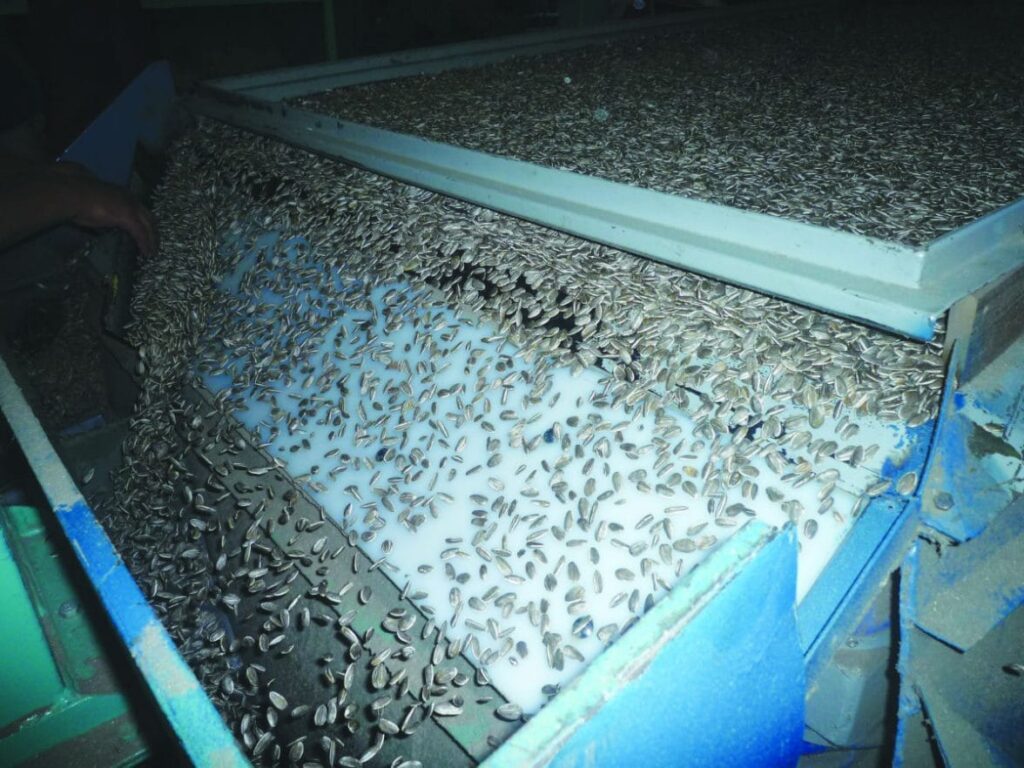Experts weigh in on Europe’s low-level presence policy debate.
For the past couple of years, we have been hearing a lot about Europe’s struggles with the acceptance of biotech varieties and finding a practical solution to the low-level presence issue. European Seed magazine contacted Garlich von Essen, secretary-general of the European Seed Association (ESA); Jonathan Ramsay, government and industry affairs lead of Monsanto in Brussels, Belgium; and Kerstin Mönch, head of section biotechnology and genetic engineering at the German Plant Breeders’ Association (BDP), who shared their views on the matter.
EUROPEAN SEED: Garlich, could you please give us an update on the European Commission’s LLP policy?
GvE: The first Commission proposal to regulate the presence of genetically modified organisms in non-GM products — surprising though it may seem — looked at seed. In 2000, following a request from the European seed industry from 1999, the COM presented a first draft. Clearly, this quick reaction was not the least triggered by a practical incident, such as the GM presence in seed of oilseed rape in the spring of that year. Since then, almost 15 years have gone by, and almost everything in relation to GMOs, from authorisation to monitoring and from coexistence to labelling, has been regulated meticulously by the European Union, with the marked exemption of seed.
The latest addition to the EU’s policies has been the passing of a so-called ‘technical solution’ for the presence of GMOs that are not yet authorised in the EU, but have already been authorised for cultivation in other parts of the world — but only under the proviso that the produce to be imported is intended for feed use only, a move mainly motivated by the EU’s strong dependence on protein imports for its animal production.
Despite massive complaints from agri-food chain operators and specifically the international grain trade, the EU still has not extended this ‘technical solution’ to food uses, leaving businesses involved in both feed and food trade in legal limbo. Most of all, however, practitioners are dissatisfied that the EU is not working on a proper set of rules for low-level presence of GMOs in non-GM products and a respective threshold. It has restricted its alleged ‘solution’ to only the tip of what is seen as an iceberg of problems by limiting it to only a few products and setting a level of detection of 0.1 per cent as the highest acceptable level.
But what about seed, one might wonder? While food and feed products have a threshold of 0.9 per cent for labelling obligations since 2003 and work on the extension of a technical solution for food has at last been announced by the Commission, seed rules seem to have been avoided by the Commission at almost all political and economic cost.
ES: Jonathan, what do you think of the current AP/LLP policy in the EU?
JR: Well, first of all I have to say that seed quality and safety is our number one priority. Seed companies can and will adapt to rules and regulations, but no business can thrive where there is uncertainty. That is why a harmonised sampling and testing approach is vital for Europe. The free movement of goods is a fundamental principle of the EU and it is astonishing that the Commission refuses to address the issue of harmonised testing and sampling of seed. Rather than focusing on legalising illegal bans, the European Commission should focus on the clear call from all member states, dating back to the 2008 Council, to establish a threshold for adventitious presence.
ES: Kerstin, could you describe what are the practical consequences of this lack of regulation?
KM: The difficulties for the companies caused by the European ‘zero tolerance’ policy are shown every year, especially when the sowing of maize and oilseed rape takes place: Even if the GMO testing within elaborate internal quality assurance systems doesn’t give any hint to GMO traces, any other testing could come to a completely different result. As long as seed multiplication takes place in free nature, there could be no guarantee of the complete absence of unintended, technically and biologically unavoidable GMO traces in conventional seed. Plant breeding companies as well as the whole agricultural sector have to deal with permanent legal uncertainty and the fear of seed lots — or in the worst case fields — that have to be destroyed just because of suspected GMO traces.
ES: Garlich, a recent decision gave EU countries the power to choose whether they allow the cultivation of GM varieties or not. Has this policy already been implemented and what are the pros and cons of such an approach?
GvE: Ditching political responsibility also seems to be the main motivation behind the latest idea of the Commission to scrap the EU’s decision-making power on GM authorisations altogether and hand it back to its Member States. For more than a decade, Ministers regularly failed to authorise new GM products, despite repeated positive safety assessments from the EU’s own food safety body, EFSA. According to the current rules, it was then up to the Commission to take the final decision — and of course the blame for disregarding political will of vocal activist groups and opposing Member States.
The EU authorisation system is known to be notoriously slow and unpredictable. Countries could safely approve the mostly unnoticed yet irreplaceable imports while taking a hard line on the much more publicised cultivation dossiers. While the Commission stresses that giving countries the right to “restrict” [ban] GM cultivation in their territory should help unblock this infamous authorisation system, most insiders predict that little would change under such a new system. On the one hand, many Member States have already introduced national GM cultivation bans, mostly advocating new scientific evidence that allegedly overturned the European Food Safety Authority’s positive opinion. While many of these bans have been disputed by biotech and seed companies and even farmers and were consequently annulled or declared illegal by national and EU courts. The European Commission, generally expected to be the watchdog for harmonised implementation of EU law, has shown very little appetite for such legal battles. But most importantly, the question of how the EU would deal with a potential patchwork of different authorisation statuses of the same GM event in different countries remains unanswered. How can products move within an internal market when the same product is fully approved for all uses in one Member State while it is considered illegal and banned in another? This and other questions will surely be up for discussion again when the proposed new approach now goes into a second round of discussion between the Member States and the newly-elected European Parliament as of this fall.
ES: Garlich, can you share what is in the pipeline for the near future?
GvE: While the details of the final outcome may still be uncertain, it seems that a deal will be reached, as both the Commission as well as the Parliament share the desire to appease the widespread anti-GM lobby rather than to follow the EU’s own scientific bodies. A further indication is the strong statement of the new Commission president Jean Claude Juncker who, outlining his policy priorities for the new Commission to the Parliament, already promised MEPs to review the Union’s overall GM policy to better reflect societal views. Clearly, this statement is just one of many concessions Juncker has used to gain the necessary support for himself and his new team from Parliament; but it must be expected that MEPs will hold him and his responsible Commissioner Vytenis Andriukaitis from Lithuania, accountable to deliver on this promise.
ES: Jonathan, what are the plans of your company on the biotech cultivation approvals?
JR: While Monsanto has long argued for European farmers to be granted the same level of choice as their international counterparts around the world, the EU will have to come to that decision in its own time.
ES: Kerstin, what other consequences are caused by such a policy?
KM: Even more devastating than the economic consequences of the restrictive GMO policy is the impact on GMO research. While there were 109 field trials in the European Union in 2009, only 10 were realised in 2014 — with not a single one in Germany. In this context, not only have the private activities been discontinued, but also the public research sees no chance to work under these hostile conditions.














